ru
en
Cell-2020 for Fridge4
V.Zavjalov, 2020-2021
Outer cell
A cylinder made of glass reinforced nylon (GRP). ID=40, OD=50, IL=80mm.
I did a few tests at high pressure: first cell broke at 13 bar, second
one at about 2.5 bar. Then I realised that this happens because of too
fast cooling. The third cell survived 35 bar, the forth cell is the final
make.
The cell #4 is made of a tube and two cups with threaded connections
(assembled with Stycast-2850FT). I also wrapped it with fishing line to
make walls more ridgid (not sure how useful it was).
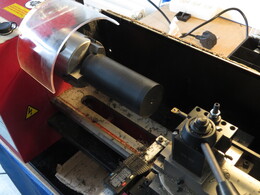
start making outer cell N1, 24.07.2020
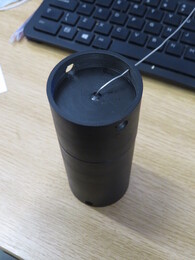
pressure test N1, 09.09,2020
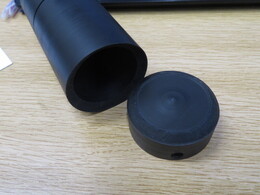
cell broke at 13bar
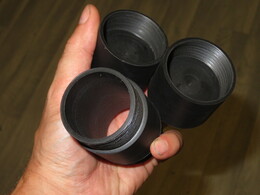
parts of outer cell N2
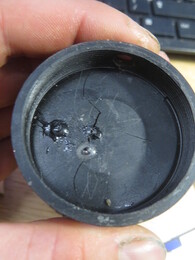
cell N2 broke at 2.5 bar, now it's clear that cooling was too fast
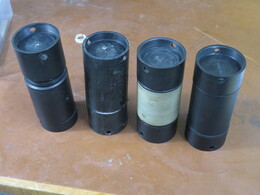
cells N1 .. N4, 3.12.2020.
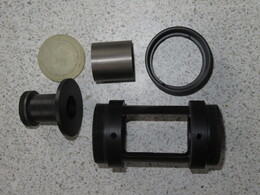
mixing chamber flange, coil former for heat switch magnet, Nb shield, cell support, 25.09.2020
Heat switch
Heat switch is a piece of aluminium inside a magnet. When magnetic
field is off it's superconductive (low heat conductivity) when field is
on it's normal (high heat conductivity).
An important parameter of a heat switch is resistance in normal state
- small resistance means good thermal conductance. We use pure aluminium
and pure annealed silver. It's not trivial to make a good contact between
aluminium and silver: one should avoid both aluminium oxide and mutial
diffusion of metals at the interface. There are many methods how to make
the contact. In Lancaster spot-welding is used. Silver wire is heated by
graphite electrode and pushed into aluminium. The process is fast (~1s)
and mutual diffusion of metals is small. Best heat switches have
resistance about 10 nOhm, bad heat switches - above 10 uOhm. This one is
about 2 uOhm/wire, the bottleneck is thin silver wires.
The heat switch is done as a pair of discs connected with a
cylindircal leg. This is done to avoid direct path between silver wires
and reduce possible heat transfer along vortices in superconductive
state. The final version has 6 cuts on the top disk and 8 cuts on the
buttom one, to separate all wires (we want to disconnect cells from each
other) and reduce eddy current heating when changing magnetic field.
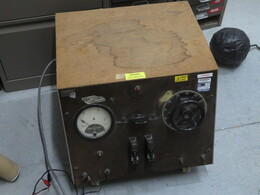
spot welder for making heat switch
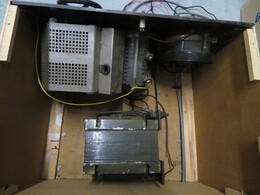
inside
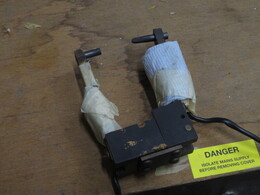
graphite welding tips
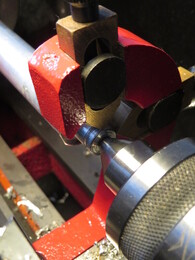
machining Al for heat switch
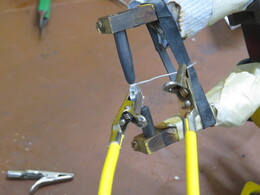
test welding
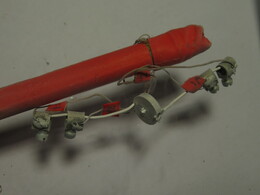
measuring resistance
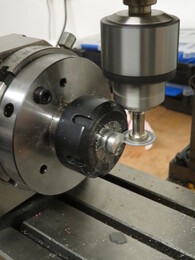
making cuts in the heat switch, 24.12.2020
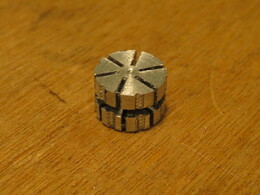
top side
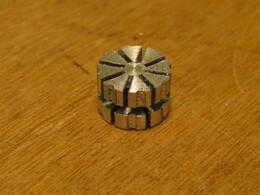
bottom side
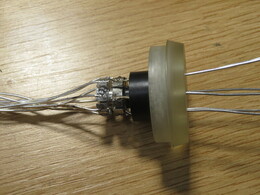
heat switch with welded silver wires; mixing chamber flange
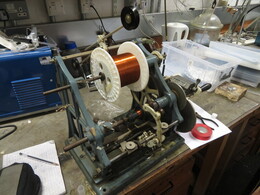
making the heat switch magnet
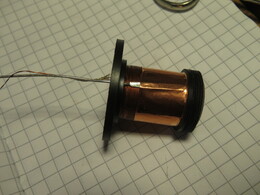
heat switch magnet
Heat exchangers for the mixing chamber
To transfer heat from silver wires to the mixing chamber of dilution
refrigerator we use heat exchangers made of sintered silver powder.
Silver powder is pressed in a form and then quickly heated to ~150C to
sinter silver particles. Higer temperature or longer heating results in
degrading of surface area. One heat exchanger contains 6g of powder and
has 25-30 m^2 area.
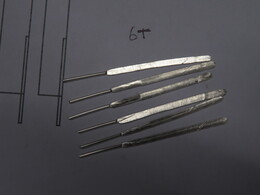
silver wires
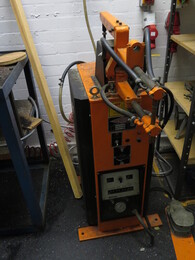
spot-welding machine
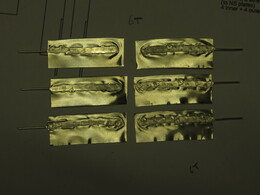
wires welded to silver foils
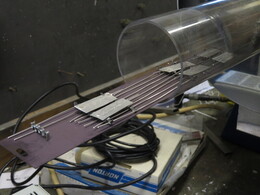
annealing silver parts
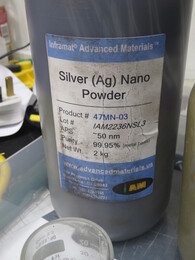
silver powder
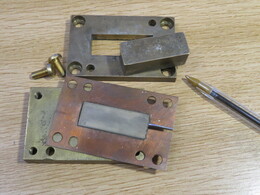
form for making sinters
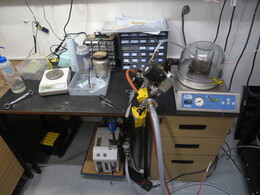
making sinters
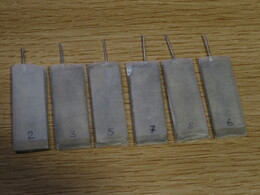
sinters wrapped in paper
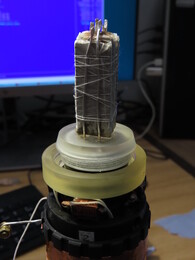
how it looks at the end
Nuclear stage
1mm thick annealed copper plates covered with 0.1mm layer of silver
sinter.
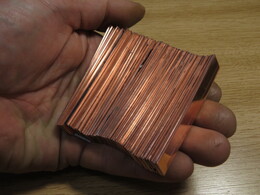
copper plates for the nuclear stage, 12.11.2020
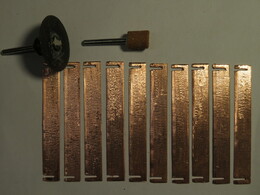
making bevel on one side, rough surface, side cuts
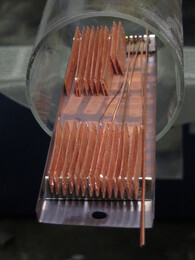
annealing
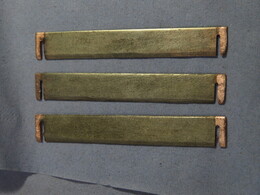
silver covering
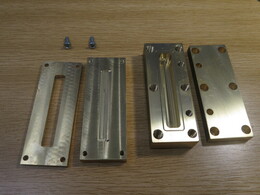
form for making sinters and cell for measuring surface area
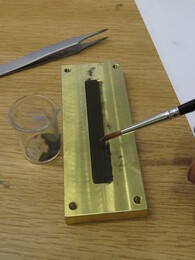
spreading powder in the form
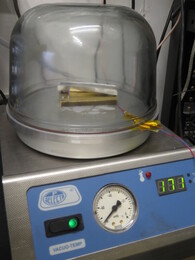
baking
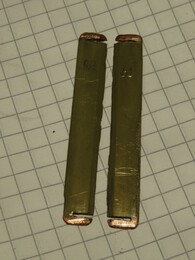
plates covered with sinter
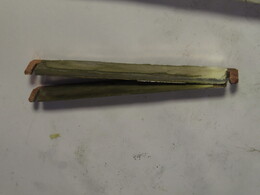
welding pairs of plates together
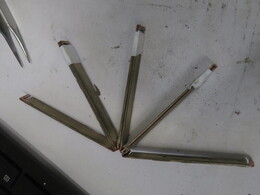
welding 4 pairs together in zig-zag way
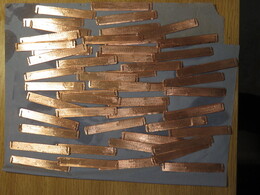
more plates

filling lines for inner cells wrapped around nuclear stege blocks
Inner cells
Two paper+Stycast boxes with 16 nuclear stage plates in each. Aegogel sample in
the cell #1. Each cell contains three vibrating wires: 127um tantalum wire, 4.5um
NbTi wire, 0.45um NbTi wire.
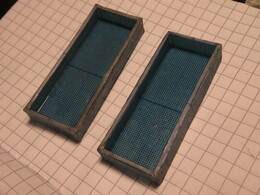
paper boxes
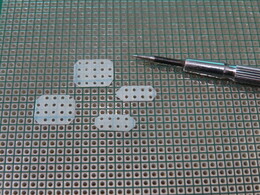
spacers
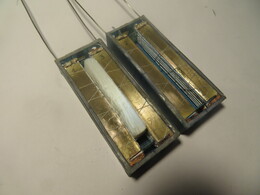
both cells, aerogel sample
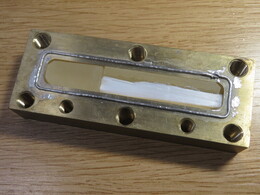
measuring surface area of aerogel
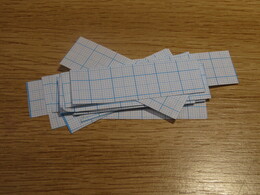
measuring surface area of paper spacers

tantalum vibrating wire
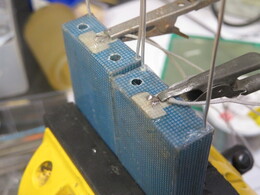
glueing tantalum wires
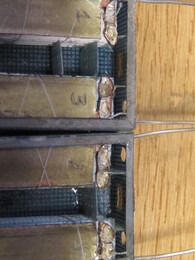
tantalum wires inside cells
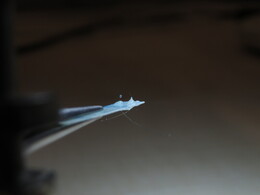
4.5um wire
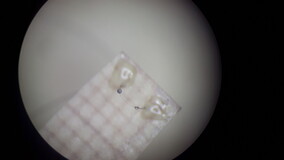
4.5um wire under microscope
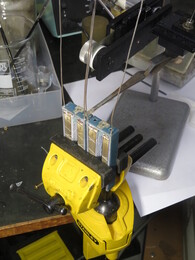
glueing 4.5um wires
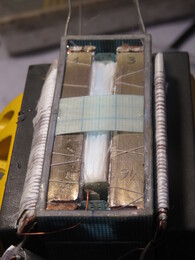
assembling both cells, nuclear stage plates, filling lines
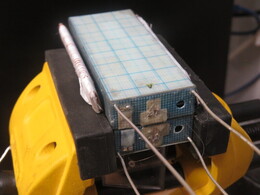
closing cell cover
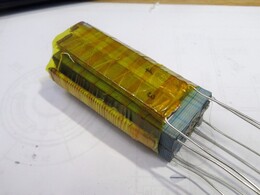
inner cells with all nuclear stage plates
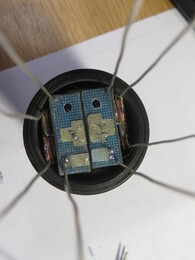
test how inner cells fit the outer cell
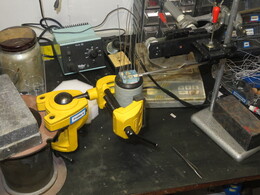
glueing 0.45um wire
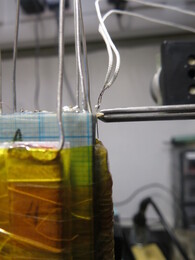
glueing tantalum wire for the outer cell
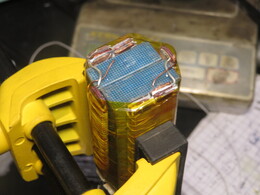
bottom part of inner cells
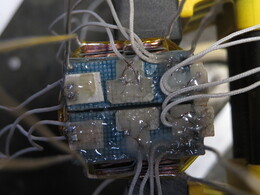
top part of inner cells; all leads are soldered
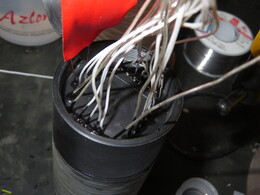
upper flange of the cell
NMR thermometer
In this cell I wanted to play with copper NMR thermometers (and
replace copper with platinum later, if everything works). I made four
copper probes, RF coils, and NMR solenoid. The solenoid was located in a
gap between two niobium shields. Unfortunately it's very hard to get
homogeneous field in this configuration (it's too sensitive to exact
dimensions of the coil system). I found CW NMR line from copper, but it
was too wide. NMR solenoid was used later to protect heat switch Nb
shield from strong field of the main magnet.
Probes are made of high-purity annealed copper to avoid quadrupole
intrinsic field (annealing is not that important for Pt) and to increase
thermal conductivity. Thin foils are used to reduce skin effect and
to decrease eddy current heating by RF field.
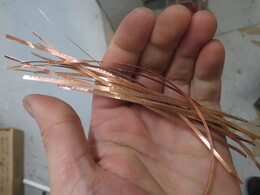
2mm-wide foil stripes (0.1mm copper) for making NMR probes
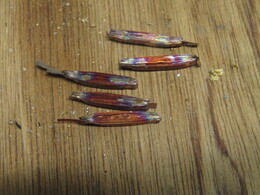
24 foils are welded together
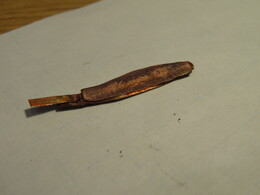
pressing to ~2mm thickness
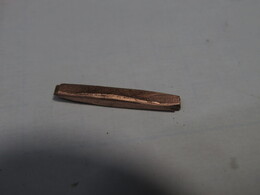
after grinding
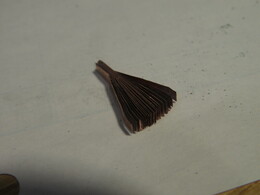
cut one end and separate foils
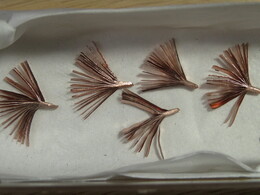
probes after annealing
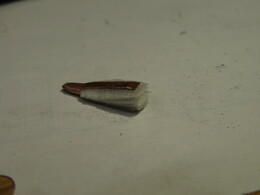
paper between foils
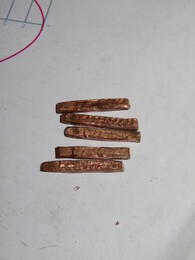
probes are ready
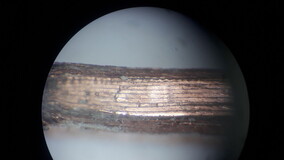
probe under microscope
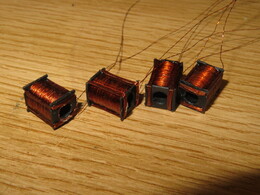
RF coils
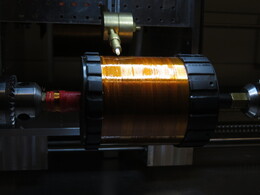
making NMR solenoid
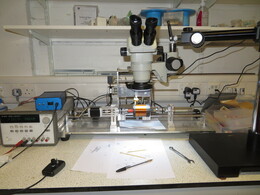
a nice coil-winding machine made by Roch S.
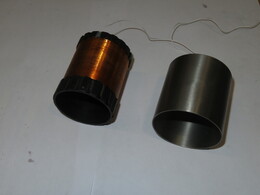
the solenoid and niobium shield
Assembling the cell
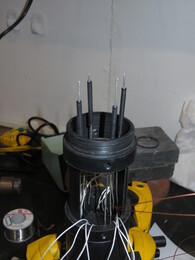
wires from inner cells go to NMR thermometers inside thin-wall GRP tubes
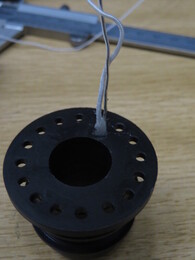
heat switch magnet
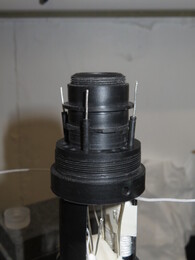
place for NMR thermometers
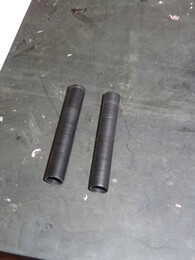
GRP holders for cell filling lines
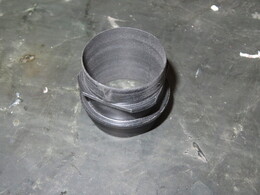
GRP holder for RF coils
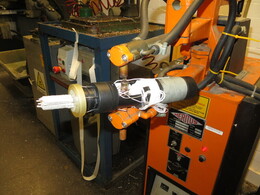
welding silver wires between cell and heat switch
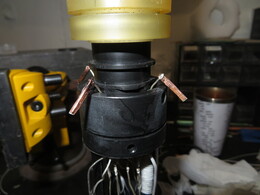
welding NMR thermometer probes
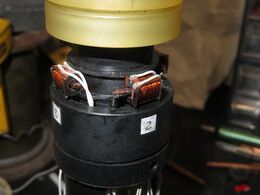
NMR thermometers
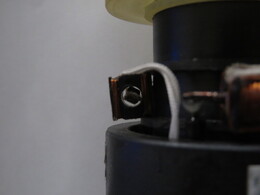
probes should not touch RF coils
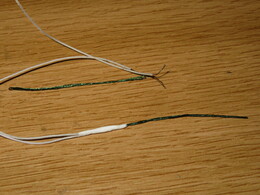
heaters (Eureca wire)
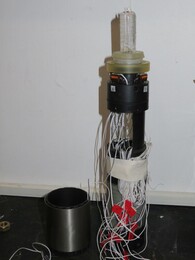
cell before installing to the cryostat
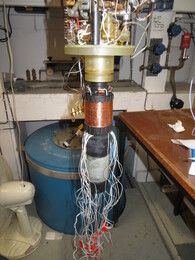
cell on the cryostat
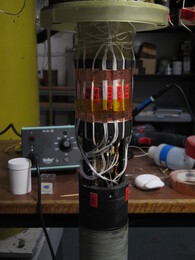
wires are connected
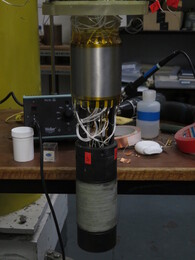
niobium shield is on the place
fixing leaks in the cell, 06.2021-01.2022
Between spring 2021 and spring 2022 we found a fixed a few leaks
in the dilution refigerator and the cell:
- Bad cone on the cell flange.
- Leak in the step heat exchanger #2. A cold leak which finally
opened at room temperature.
- A very bad cold leak in the top flange of the cell. We did many
attempts to fix it by covering all cell with Stycast. Finally we have
found that our 24LV Stycast catalyst was bad, only after that we managed
to fix the leak.
- Crack in the mixing chamber which appeared during leak tests of the cell.
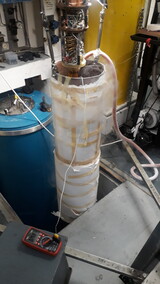
leak test with liquid nitrogen, 10.2021
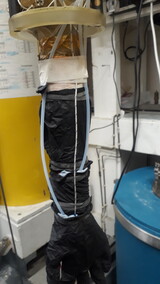
separating parts of the cell
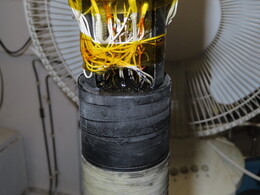
upper part of the cell is filled with Stycast - no result

cutting cell from the heat switch
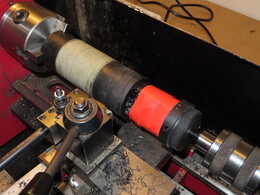
machining the cell
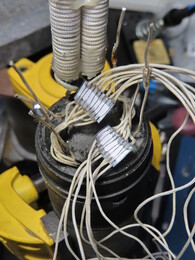
removing wire isolation
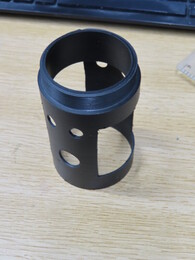
new cell holder
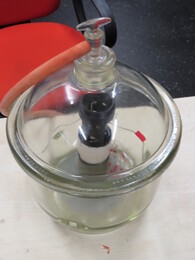
glueing
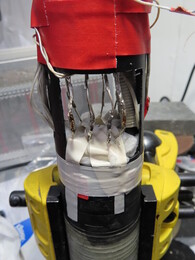
welding cell to heat switch
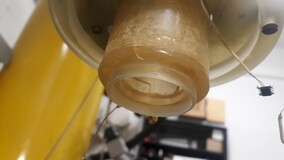
crack in the mixing chamber
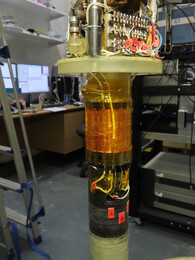
cell in the cryostat, 12.2021
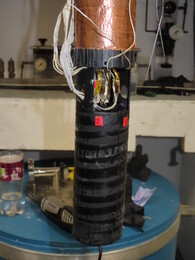
cover the whole cell with Stycast, leak is still there
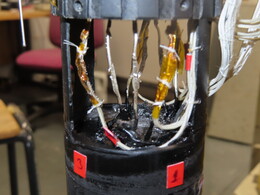
new heaters
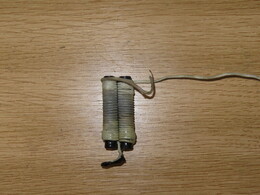
filling lines
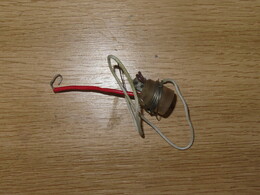
pressure gauge
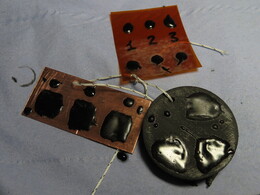
testing Stycast; one sample has a "bad" surface
Cell after explosion, 06.2022
After sucsessful experiment in April-May 2022 the cell has exploded
because of a fault of a power supply.